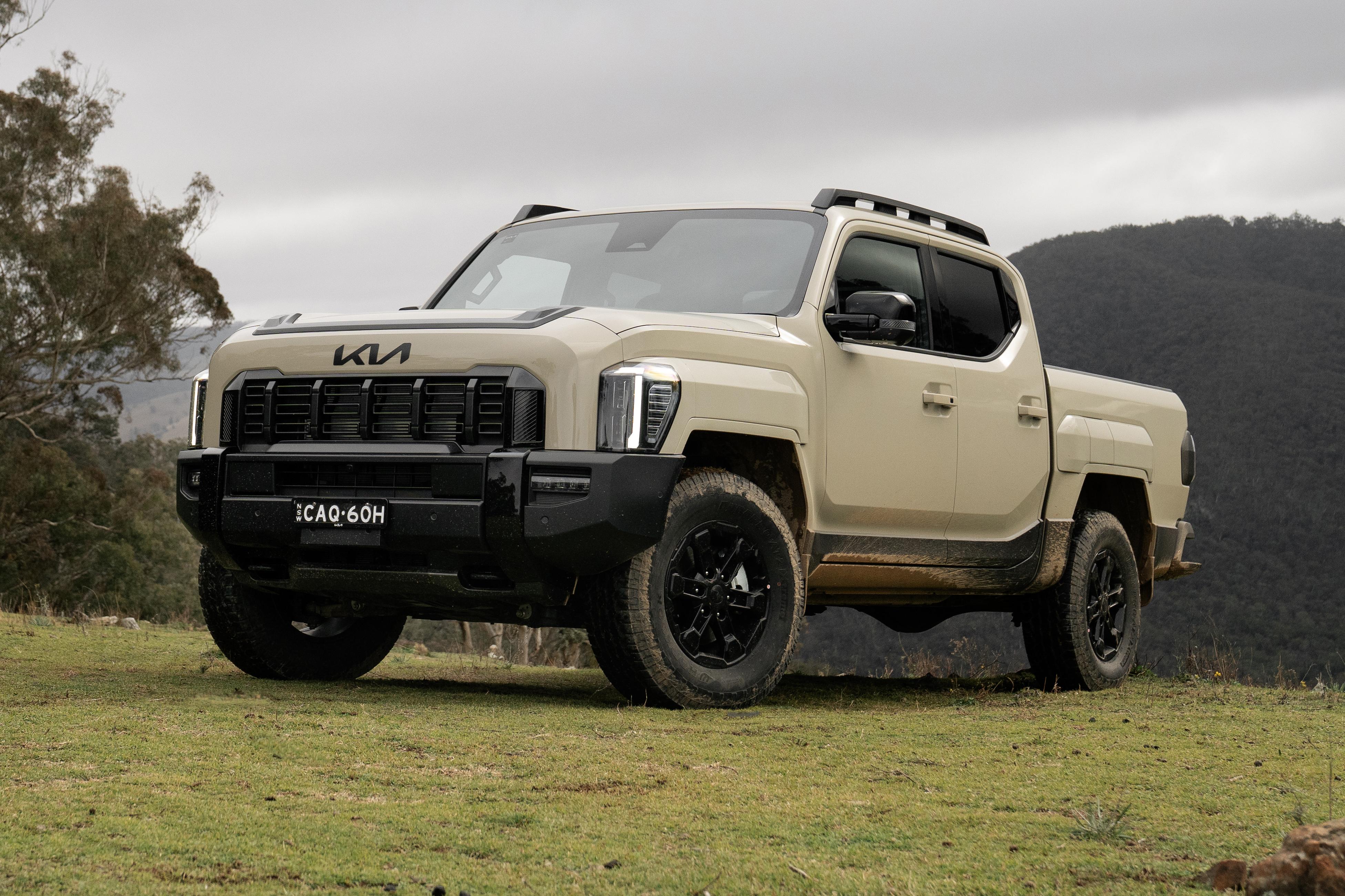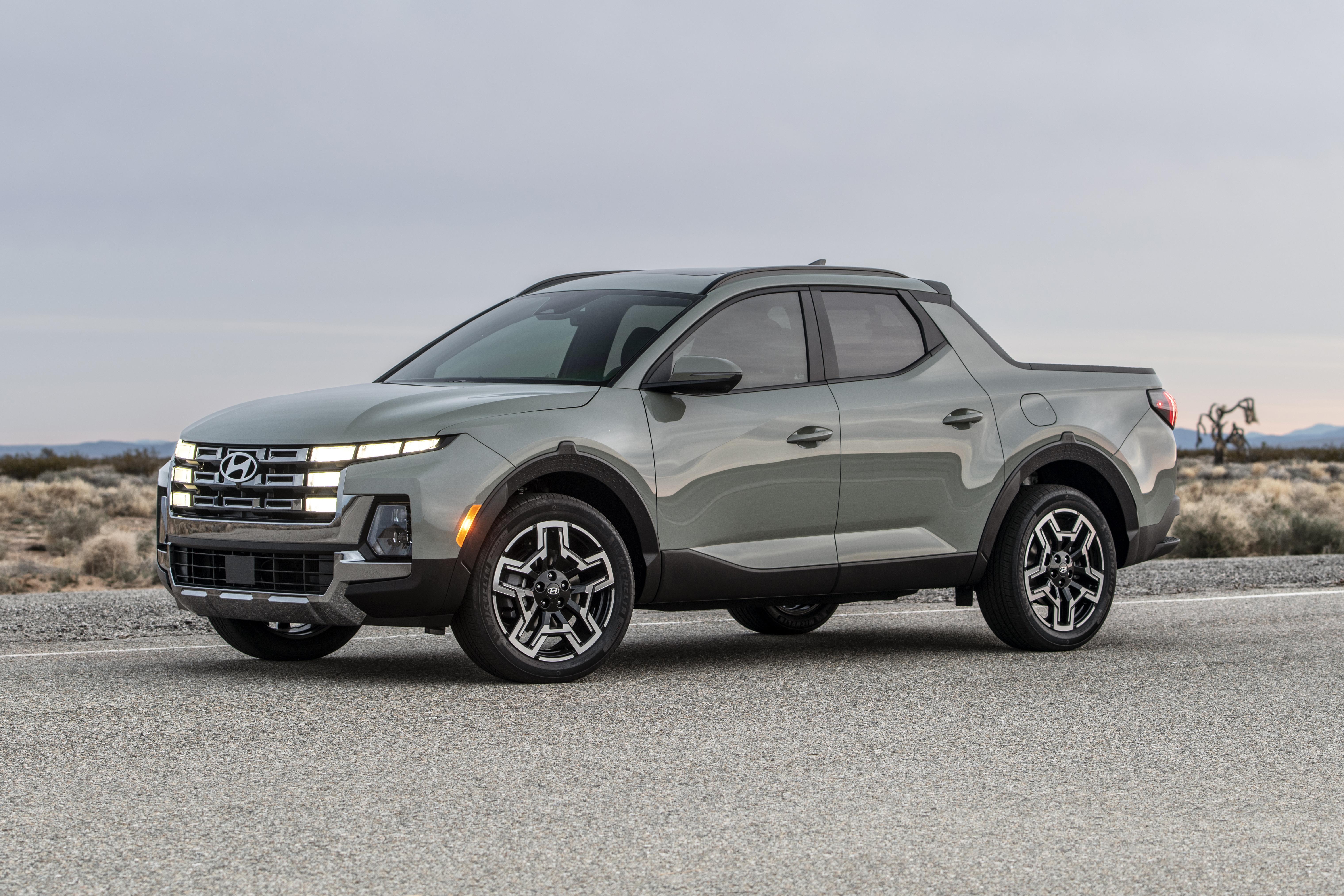Hyundai says the first ute it will offer in Australia won’t be a simple ‘badge engineering’ exercise, and it appears the company is willing to wait for the “right” product rather than whatever is most expedient.
“I’m not leaving until I have a ute, and not just any ute. I mean, we could easily take another platform and just go out there and rebadge it, and that’s just not acceptable, especially now,” Hyundai Motor Company Australia president and CEO Don Romano told Australian media at an event for the new Palisade.
“With the competition continuing to grow, we need to differentiate ourselves, and there are technologies that we’re currently developing that are different than anything we brought to market. I can’t get into the details, but they will be coming out before I leave,” he added, somewhat cryptically.
“We will use it to ensure that our ute and our vehicles in the future are different than what China is currently producing. I’m sure they’re also looking at those,” he said, referring to the growing number of electrified ute options from China including the plug-in hybrid BYD Shark 6.
“Those brands are looking at different technologies as well, but we’re going to try to be first to market in a number of areas.”
CarExpert can save you thousands on a new car. Click here to get a great deal.

“We can’t really get into it right now, but we do have an option that’s coming out. It’s not necessarily a plug-in hybrid, but it is going to be a different type of hybrid, that’s all I can say,” explained Mr Romano, which appears to suggested the upcoming ute could be offered as an extended-range electric vehicle (EREV).
EREVs typically drive like an electric vehicle (EV), but feature a combustion engine that works as a generator to charge the battery rather than send drive to the wheels.
Hyundai recently announced a partnership with General Motors that will see the two automotive giants co-develop a range of vehicles for certain markets. GM already has a range of utes, but Mr Romano cautioned against simply expecting a Chevrolet ute in Hyundai Australia showrooms sans the golden bow-tie.
“We are in a relationship with General Motors, and we’re looking at that relationship. But it isn’t a done deal yet. We may go on our own. We did look at ‘do we share a platform?’ And I won’t rule it out as an option, but it would have to be different than what they came to market with because, again, it’s getting back to the differentiation,” he said.
“Now you have MG with the ute out there, you see the Sharks driving around – I mean, it’s going to just get tougher and tougher, and I think we have to really think differently.
“And I believe [Hyundai Motor Company CEO] José Muñoz, who’s leading this charge, is thinking very differently. I wish I could get into more detail with you at this stage – I can’t, but I can tell you with confidence it’s coming.”

So, when is the ute coming?
“My work permit goes for another two and a half years. I’m not leaving until it’s coming… We’re going to get together, and I’m going to talk to you about it,” Mr Romano told Australian media.
“It’s a guaranteed, here’s the date, here’s the vehicle, here’s the differentiating features, and if they produce what they’re talking about at this stage and what we’re working on, it’s going to be mind-blowing, it’s going to be great.”
Mr Romano was appointed boss of Hyundai Australia earlier this year, and said in May the company would finalise its plans for a new ute by the end of this year.
A dedicated electric ute had already been confirmed to be in development, and trademark filings for the nameplates Ioniq T7 and Ioniq T10 surfaced last year.
“Whether we go with an electric ute, it would not be my preference, but I would take it and that is something that is already under development,” Mr Romano said in May.
“We’re going to have to find that common denominator that’s going to fit both Australia and global. So there’ll be some compromise – that compromise could be a diesel, could be a hybrid, it could be a plug-in hybrid.

“What I think we need is something that competes against the number one and number two in the market, and they’re dominant players,” he added, referring to the Ford Ranger and Toyota HiLux.
“That’s [mid-size, body-on-frame] what sells here, that’s what customers want. I think every major manufacturer has one, and I don’t think you can be a viable brand without one.
“There’s absolutely nothing wrong with the [Kia] Tasman body-on-frame – it’s a great infrastructure to build from. I have concerns with diesel, although I would take a diesel short-term if I know that the evolution was going in a different direction.
“We know what we want to build, we could build it off of that. How long would it take? Probably longer than I have.”
Mr Romano also didn’t rule out a GM-based ute, though said it wouldn’t be his first choice as he’d prefer a ute to come from Korea.

In August, Mr Romano indicated a new ute for Australia wouldn’t be locked in this year, citing a decline in total ute sales which could delay development.
He said there was “wiggle room” in the timeline for the new ute to still arrive in Australia by 2029, as originally planned.
Mr Romano only intends to serve as HMCA CEO for a few years, during which time he will assist in the search for a long-term replacement. He may therefore not be in the top job by the time the ute does launch here.
Before then, Hyundai is set to launch a new Ranger rival in Latin America, one of the first five models Hyundai and GM will develop together as part of a partnership they established in September 2024.
Come 2030, Hyundai will have a new, Ranger-rivalling ladder-frame ute in North America, with this model confirmed by Hyundai Motor Company CEO José Muñoz in September. This isn’t understood to be a vehicle that’s being developed with GM.

While the Latin American ute could feature diesel power, the North American model is much less likely – instead, petrol, hybrid or plug-in hybrid powertrains could be offered.
Hyundai has never offered a conventional, body-on-frame ute, though it has a long history of building cabover trucks like the Porter/H-100.
It has a dual-can ute in the unibody, Tucson-based Santa Cruz, currently built in the US exclusively in left-hand drive, but this is more of a ‘lifestyle’ offering than a heavy-duty load-hauler.
Hyundai’s first ute was a version of its Pony, launched in 1976. It produced this Pony Pickup until 1990, but it wasn’t offered in markets like Australia or the US.

